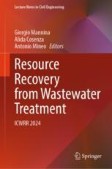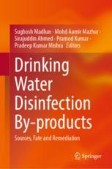Search
Search Results
-
Selective electrosynthesis of chlorine disinfectants from seawater
As one of the most widely used disinfectants, active chlorine is synthesized predominantly through electrolysis of saturated sodium chloride...

-
Dynamic COVID Zero Strategy triggered a significant increase of chlorine-based disinfectant consumption in Bei**g
Chlorine-based disinfectants (CBDs) have been widely used to prevent and control the spread of the COVID-19, which may lead to the formation of...

-
Environmental impacts of the widespread use of chlorine-based disinfectants during the COVID-19 pandemic
Chlorinated disinfectants are widely used in hospitals, COVID-19 quarantine facilities, households, institutes, and public areas to combat the spread...

-
The efficacy of chlorine-based disinfectants against planktonic and biofilm bacteria for decentralised point-of-use drinking water
Chlorine solutions are used extensively for the production of biologically safe drinking water. The capability of point-of-use [POU] drinking water...

-
A Review on Health Menace of Disinfectants and Its By-Products in Humans
A disinfectant is a chemical agent and constitutes different group of products used to control the microorganisms in all surfaces except animates....
-
The role of disinfectants and sanitizers during COVID-19 pandemic: advantages and deleterious effects on humans and the environment
Disinfectants and sanitizers are essential preventive agents against the coronavirus disease 2019 (COVID-19) pandemic; however, the pandemic crisis...

-
Pattern of disinfectants use and their adverse effects on the consumers after COVID-19 outbreak
Background and objectiveThe aim of this study was to investigate the pattern of disinfectants use within outbreak of COVID-19 and estimate their...

-
Microplastic pollution interaction with disinfectant resistance genes: research progress, environmental impacts, and potential threats
The consumption of disposable plastic products and disinfectants has surged during the global COVID-19 pandemic, as they play a vital role in...

-
Optimizing Wastewater Disinfection with Peracids and Chlorine: An Advanced Control Strategy Integrating Batch Kinetics and Hydrodynamics for Reliable Treatment Performance
Chlorine-based disinfectants are widely used in North America and can achieve the desired microbiological limits. However, these disinfectants are...
-
Treatment processes and analysis of rainwater quality for human use and consumption regulations, treatment systems and quality of rainwater
Water stress resulting from population growth, high water demand, and climate change currently represents an environmentally derived social and...

-
Drinking water consumption and association between actual and perceived risks of endocrine disrupting compounds
Drinking water contains emerging contaminants, i.e., endocrine disrupting compounds (EDCs). However, the extent to which it is publicly viewed as a...

-
The impact of COVID-19 on the US renewable and non-renewable energy consumption: a sectoral analysis based on quantile on quantile regression approach
The repercussions of the novel coronavirus (COVID-19) pandemic go well beyond health concerns, affecting virtually every aspect of our lives,...

-
Synergistic interaction of co-exposure to humidifier disinfectant chemicals CMIT/MIT and PHMG in lung injury
A number of biocidal disinfectant chemicals are used as household products to prevent spread of pathogens. People are commonly exposed to multiple...

-
A Comparative Study of Different Disinfection Processes, and Management Practices to Control the Formation of Disinfection by-Products (DBPs)
The disinfectant chemical that is most frequently utilized is chlorine. The most popular kinds are calcium or sodium hypochlorite and chlorine gas....
-
Novel eradication methods for Staphylococcus aureus biofilm in poultry farms and abattoirs using disinfectants loaded onto silver and copper nanoparticles
Recent developments in the nanotechnology field have created opportunities to design new biomaterials for Staphylococcus aureus biofilm eradication....

-
Drinking water quality and inflammatory bowel disease: a prospective cohort study
Environmental factors, such as drinking water and diets, play an important role in the development of inflammatory bowel disease (IBD). This study...

-
Availability and Minimization of Nitrogenous Disinfectant By-Products in Drinking Water
In view of high genotoxicity and cytotoxicity, the existence of nitrogenous disinfection by-products (N-DBPs) like haloacetonitriles, haloacetamides,...
-
Detection and Measurement of Disinfection By-Products in Drinking Water
It is very important to identify and precisely quantify disinfection by-products (DBPs) in water to make sure it is safe for drinking and of good...
-
Quantitative microbial risk assessment of enteroviruses in raw-eatable vegetables irrigated by wastewater: examining different scenarios of washing
Due to the increasing water crisis, the reuse of wastewater deserves attention as a method to reduce the pressure of the water crisis, especially in...

-
Trihalomethanes in developed and develo** countries
The reactions between natural organic matter, anthropogenic contaminants, ions, and disinfectants lead to the formation of disinfection by-products...

